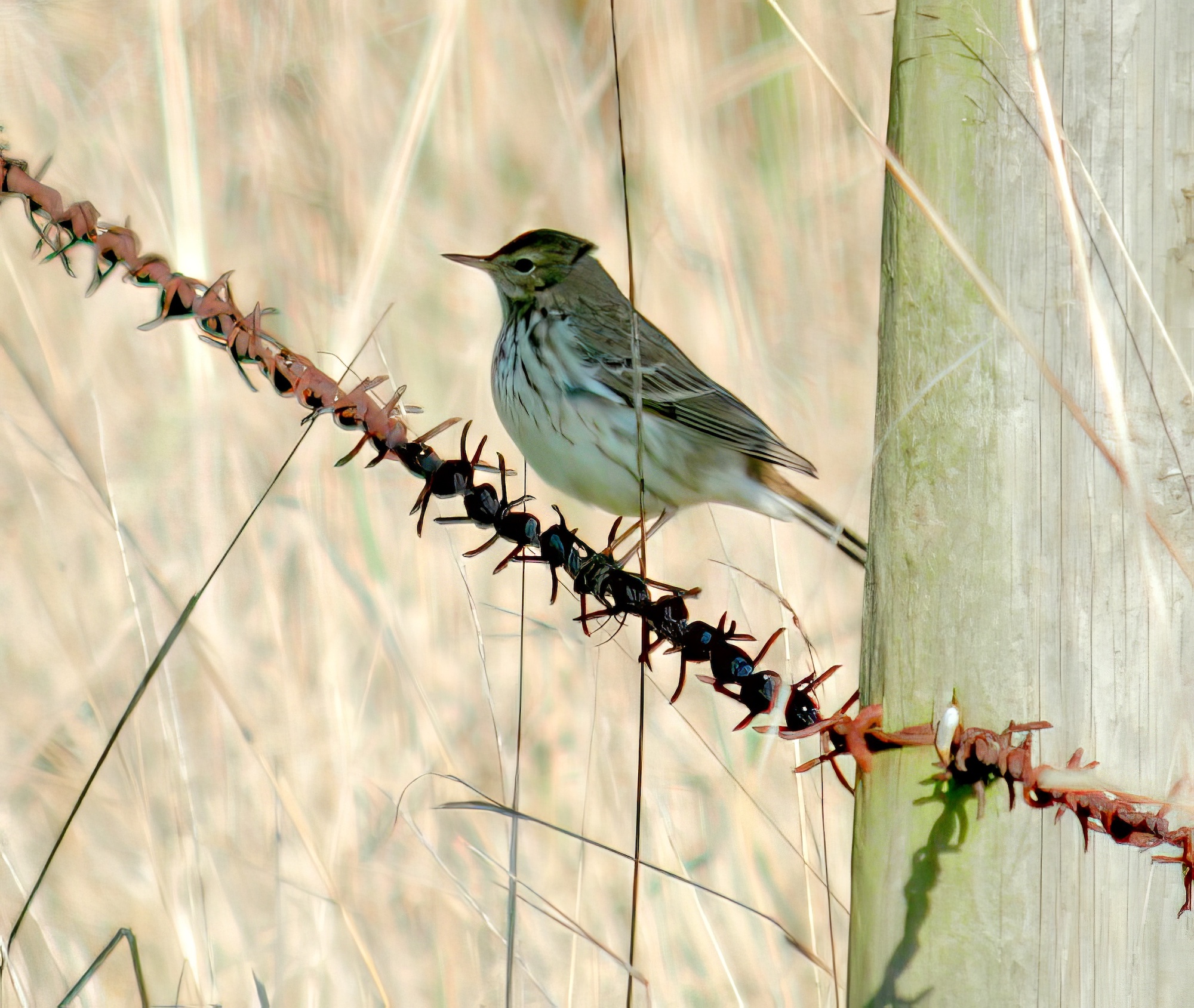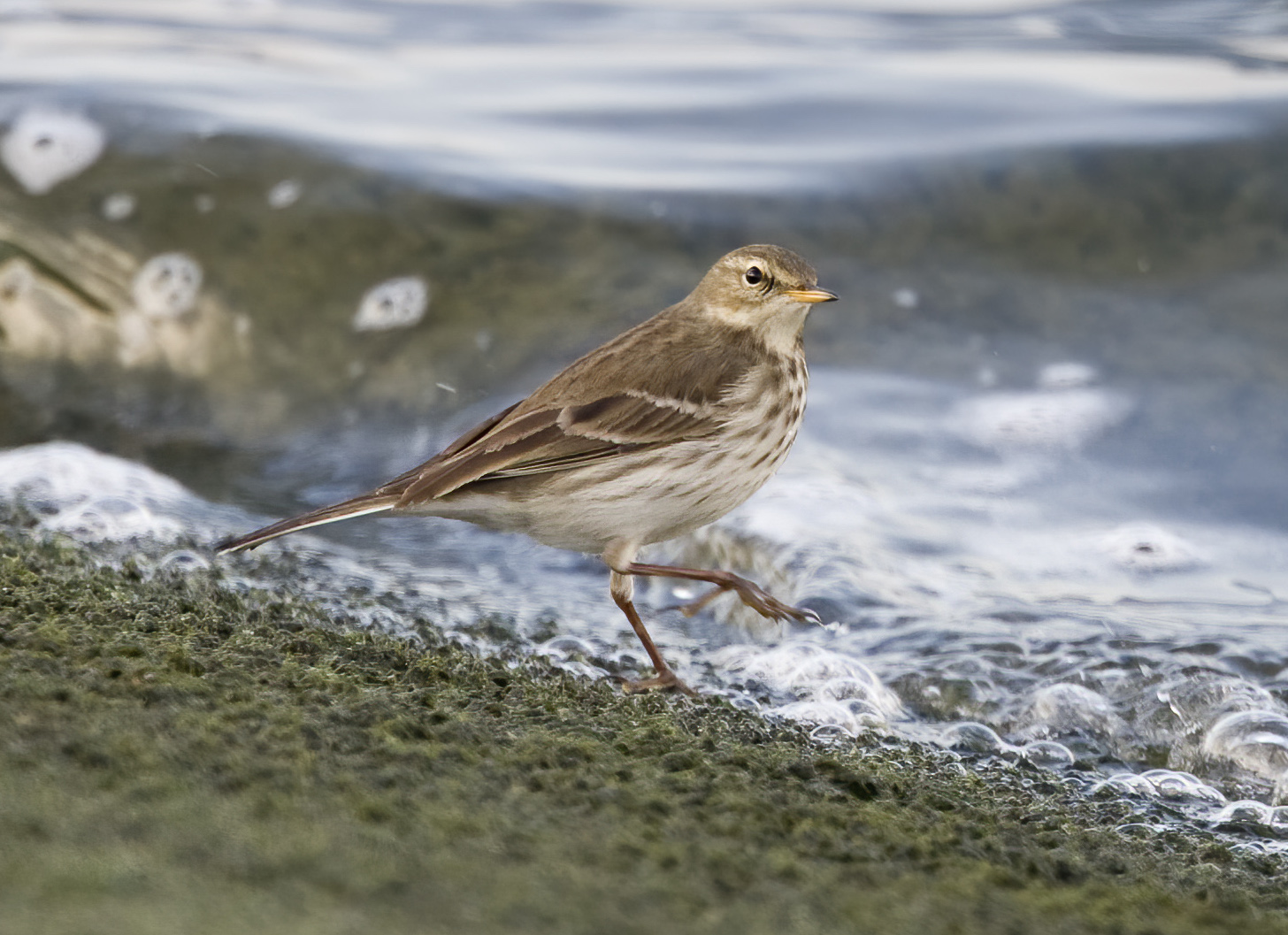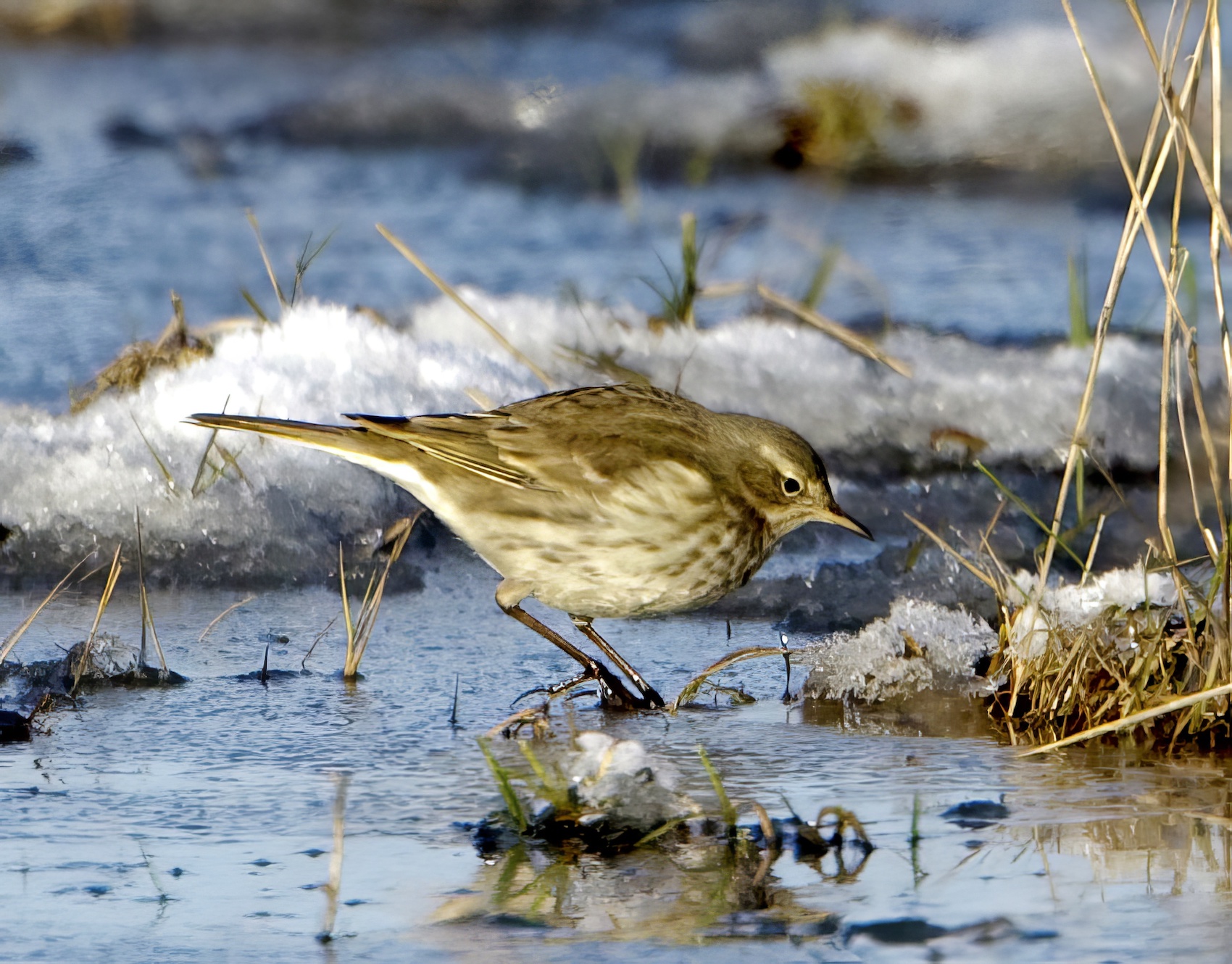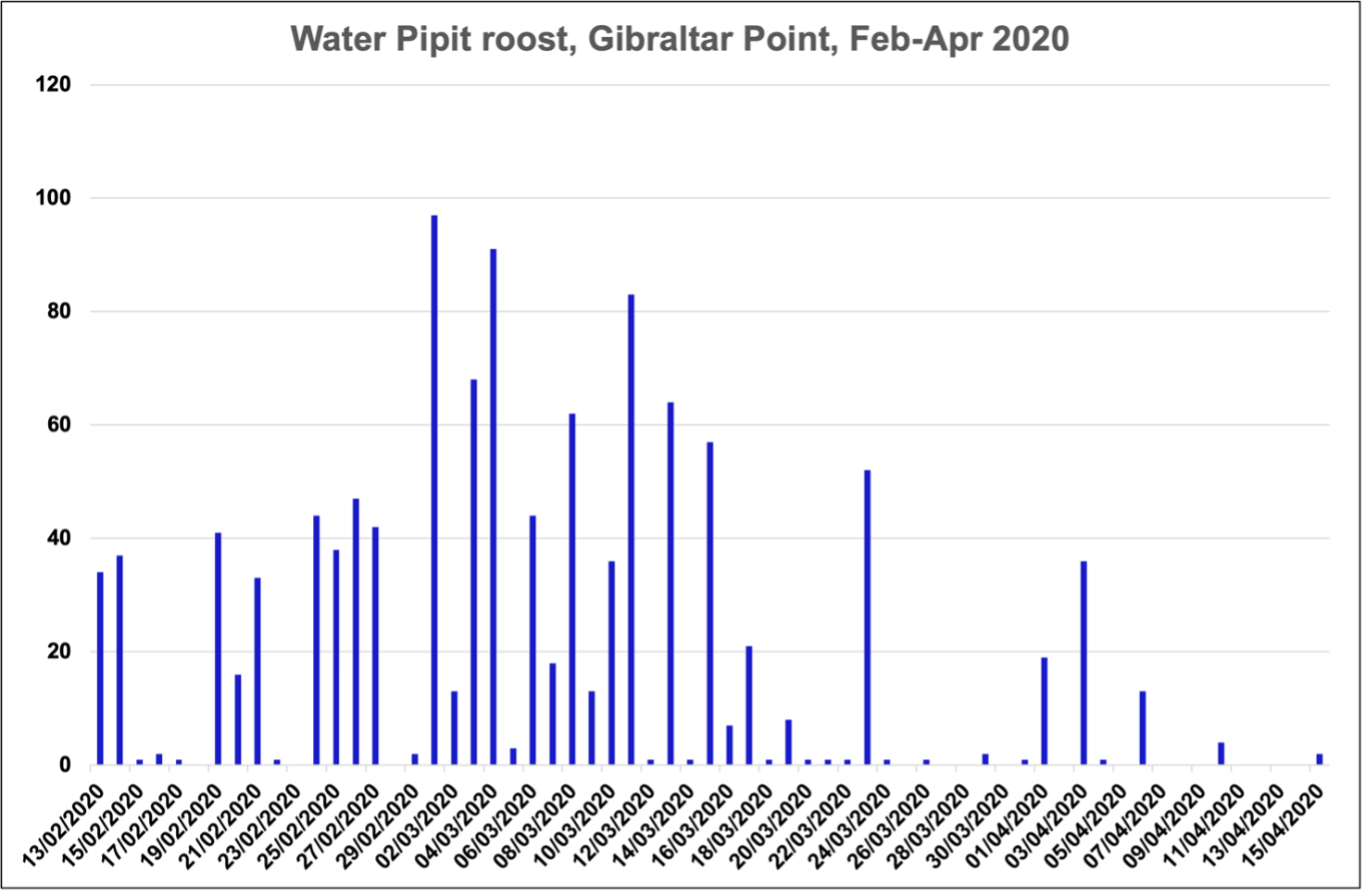Water Pipit Anthus spinoletta
Rare/ scarce passage migrant and winter visitor October to April. Mainly coastal, possibly increasing.



Water Pipits: left, Tetney Marsh January 25th 2004, centre Covenham Reservoir December 11th 2009, right, Alkborough Flats January 11th 2010 (Graham Catley);
The occurrence of Water Pipits in the county in historic times must be somewhat uncertain because of the modern taxonomic revision of the very similar Rock Pipit, Anthus petrosus, Water Pipit, Anthus spinoletta and American or Buff-bellied Pipit, Anthus rubescens. A bird shot at Tetney on April 5th 1895 by Caton Haigh was said to be the first Lincolnshire record and accepted as such by Lorand and Atkin. Details were published in “An illustrated manual of British birds” in 1899:
The true Water-Pipit is an unusual visitor to England; its occurrences having been estimated as more frequent than was really the case, owing to a confusion with the Scandinavian form of the Rock-Pipit, which occasionally visits us. The first authenticated examples of the Water-Pipit were recorded by Mr Pratt of Brighton, in 1864, when one (was) killed near that town, and another taken near Worthing, were sent to Gould for identification; while subsequently three have been obtained at Shoreham and one at Lancing, on the spring and autumn migrations. On April 5th 1895, Mr G. H. Caton Haigh shot one at Tetney, Lincolnshire, and on April 5th 1897 he obtained another at the mouth of the Glaslyn, Carnarvon- shire. Both these specimens were exhibited at meetings of the British Ornithologists' Club.
Formerly, Rock and Water Pipits were regarded as one polytypic species of Holarctic distribution, Anthus spinoletta. In 1986, the British Ornithologists' Union Records Committee decided to treat these pipits as a superspecies composed of three species: Rock Pipit A. petrosus, Water Pipit A. spinoletta and Buff-bellied or American Pipit A. rubescens, all of which occur or have occurred in Britain and Ireland. Prior to this split, county records were few and the Lincolnshire Bird Report mostly recorded Water Pipit as "birds showing characteristics of Water Pipit A. s. spinoletta". The report for 1982 noted the following with regard to their identification:
The first annual report of the LBC was published in 1979 and during the years 1979-1986 leading up to the split of this pipit complex between zero and nine records of A. s. spinoletta per annum were recorded. It was noted in the 1987 report that a bird at Holbeach St. Mark's on January 25th was the first county record of Water Pipit since the split. Small numbers continued to be reported but with zero in some years. In 1993 it was noted that a spring migrant at Gibraltar Point on April 24th was only the third site record. Most coastal sites continued to record just one or two individuals although Donna Nook recorded up to seven during December 1995 increasing to nine in January 1996. Since then and through the 2000s most records of the species have been in single figures. There does appear to be a light spring passage in late March and early April with variable, small numbers passing through in the autumn from mid-October, some of which remain to winter. There have been a very small number of years when more have been present though. One such year was 2008 when in January the previous highest county occurrence of nine birds was eclipsed by a then unprecedented group of 40 birds counted feeding in wet, harvested oilseed rape fields at Alkborough Flats, and which roosted at nearby Blacktoft Sands a short flight across the Trent. Moving on to 2020 though, an influx occurred at GIbraltar Point, the biggest to date. The first hint of an unusual influx came perhaps on February 13th when an exceptional 34 were noted rising to 47 by 26th, all birds coming to roost. With the recognition of an exceptional event occurring a small team of observers was organised a small team of observers to count birds coming into roost, many settling in Hawthorns in the west dunes and going down to areas of standing water to bathe before disappearing to roost. Three counts of more than 80 birds were counted in, peaking at 97 on March 1st (chart, below). They are always an elusive and localised species that clearly has quite specific habitat requirements and is capable of avoiding detection for long periods in the coastal habitats that it favours. No Water Pipits have been ringed or recovered in the county to date.

Reference
Knox, A. (1988). Taxonomy of the Rock/Water Pipit superspecies Anthus petrosus, spinoletta and rubescens. British Birds 81(5): 206-11.
Saunders, H., 1835-1907. An illustrated manual of British birds. Gurney & Jackson, London. 1899.
